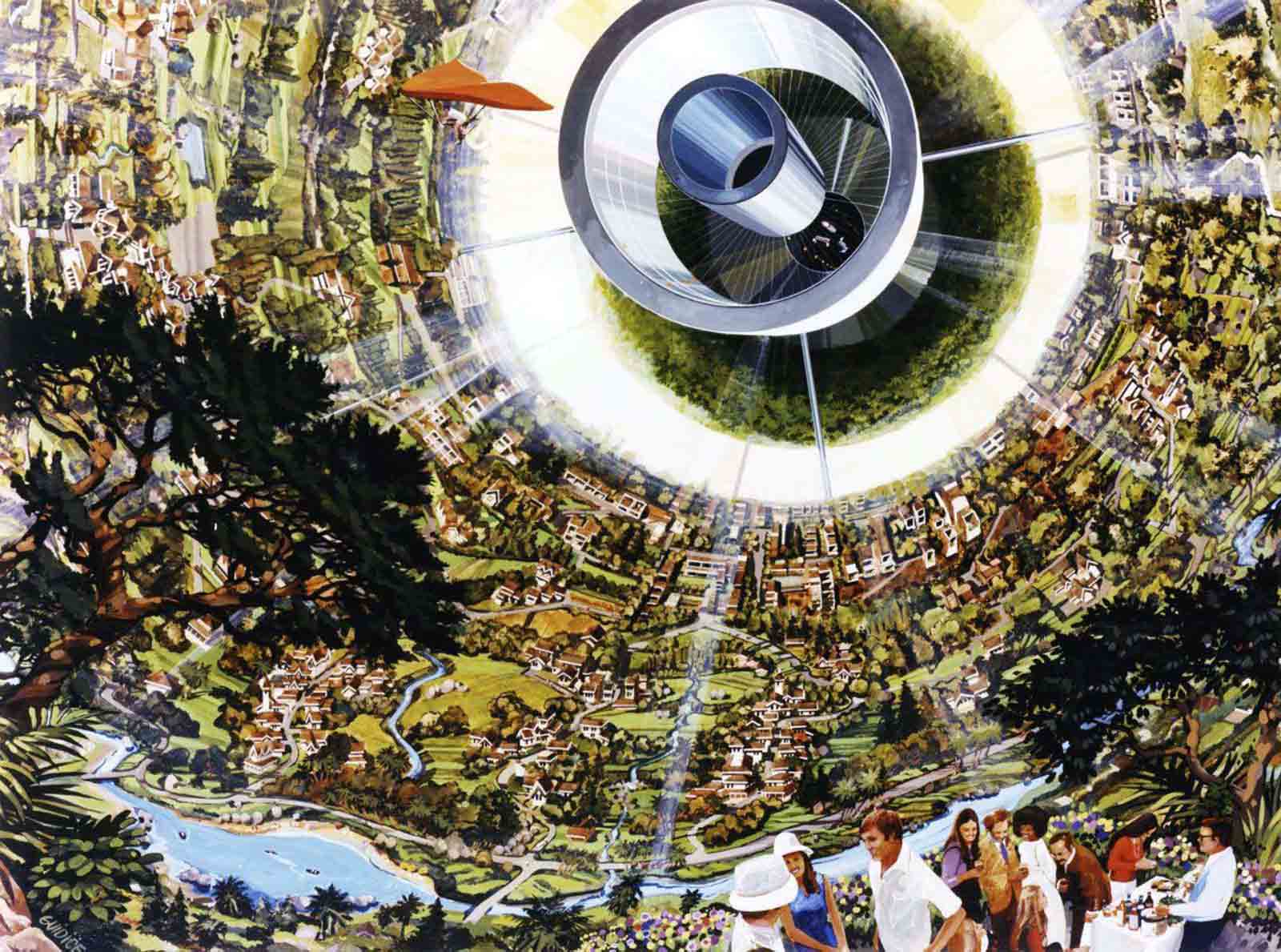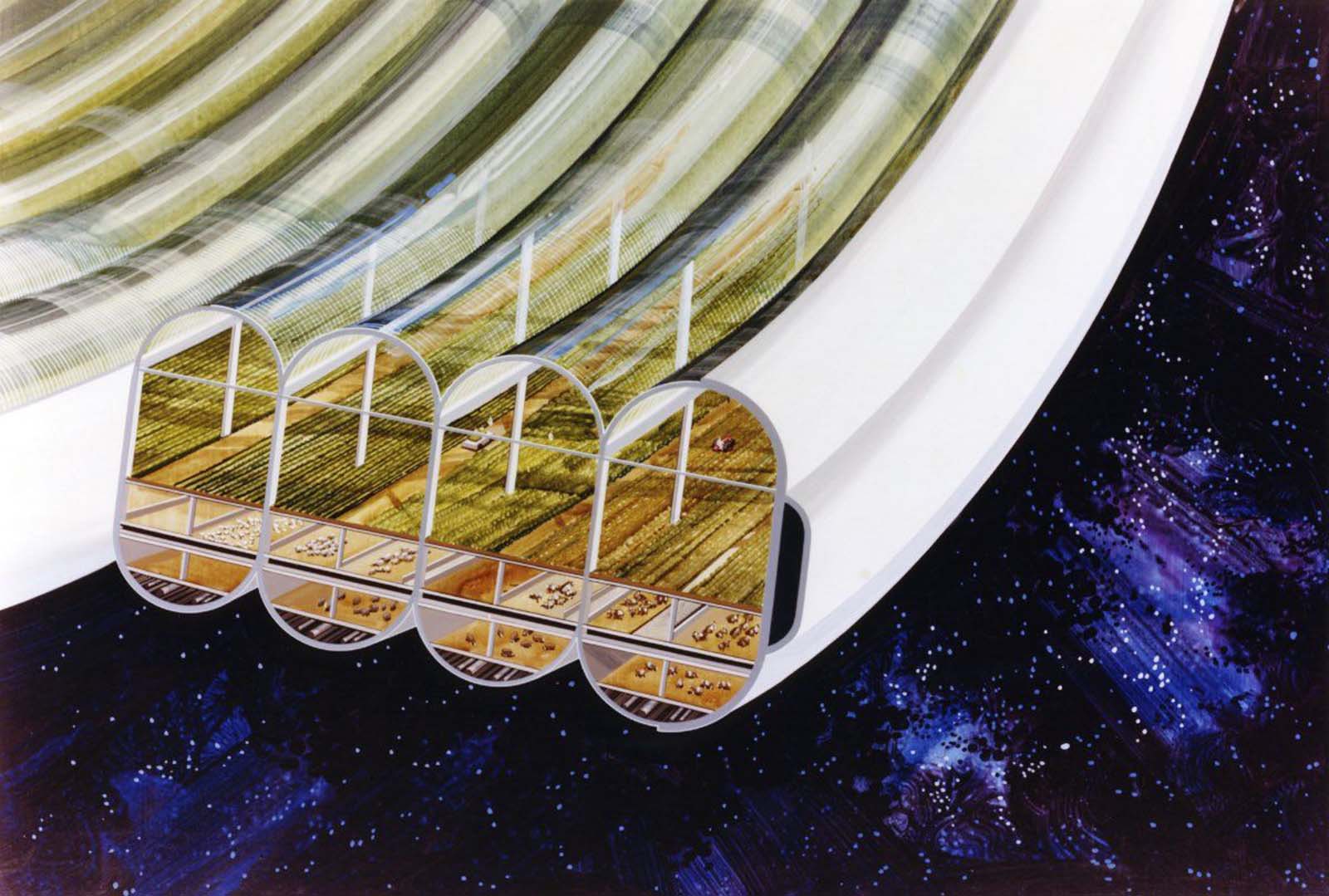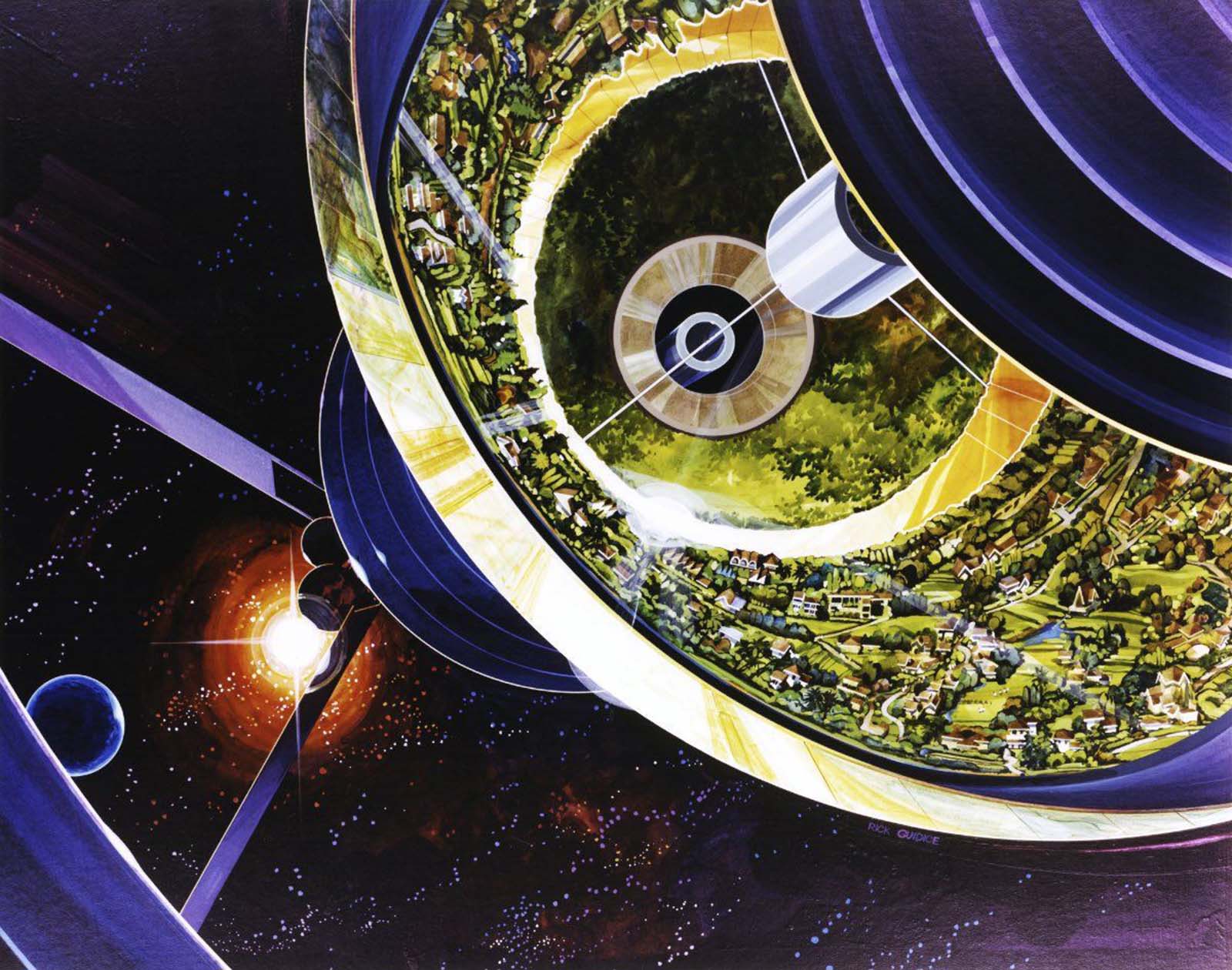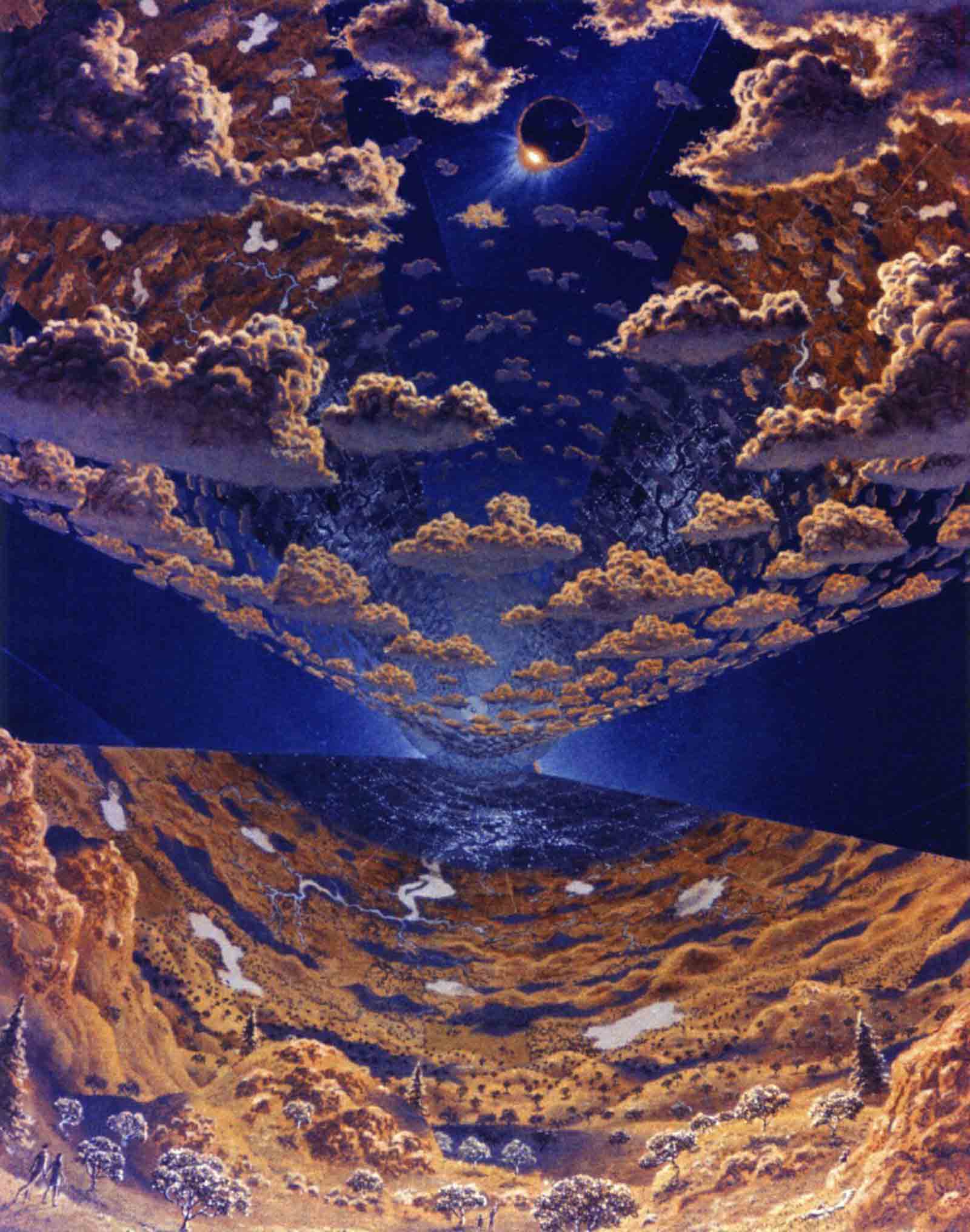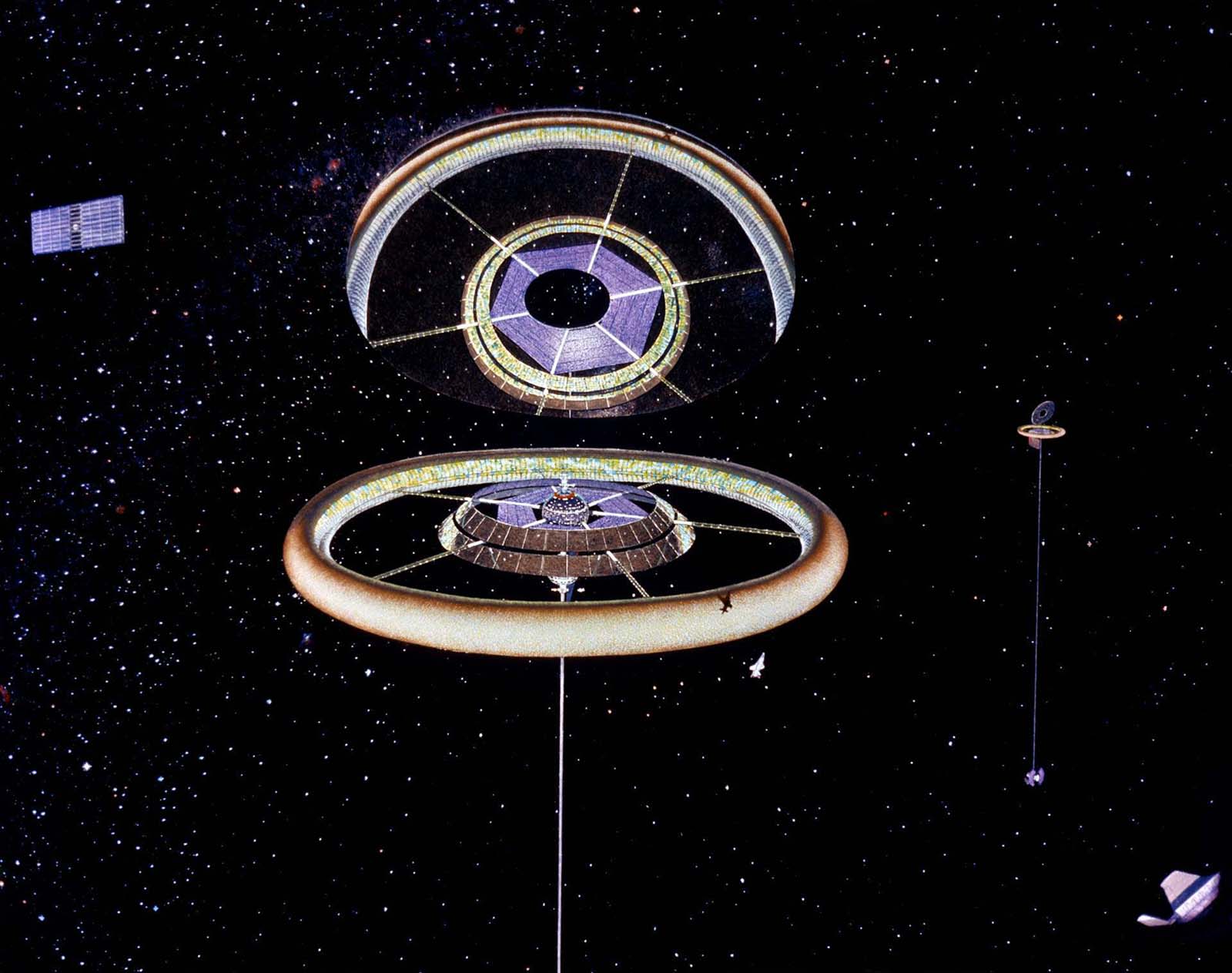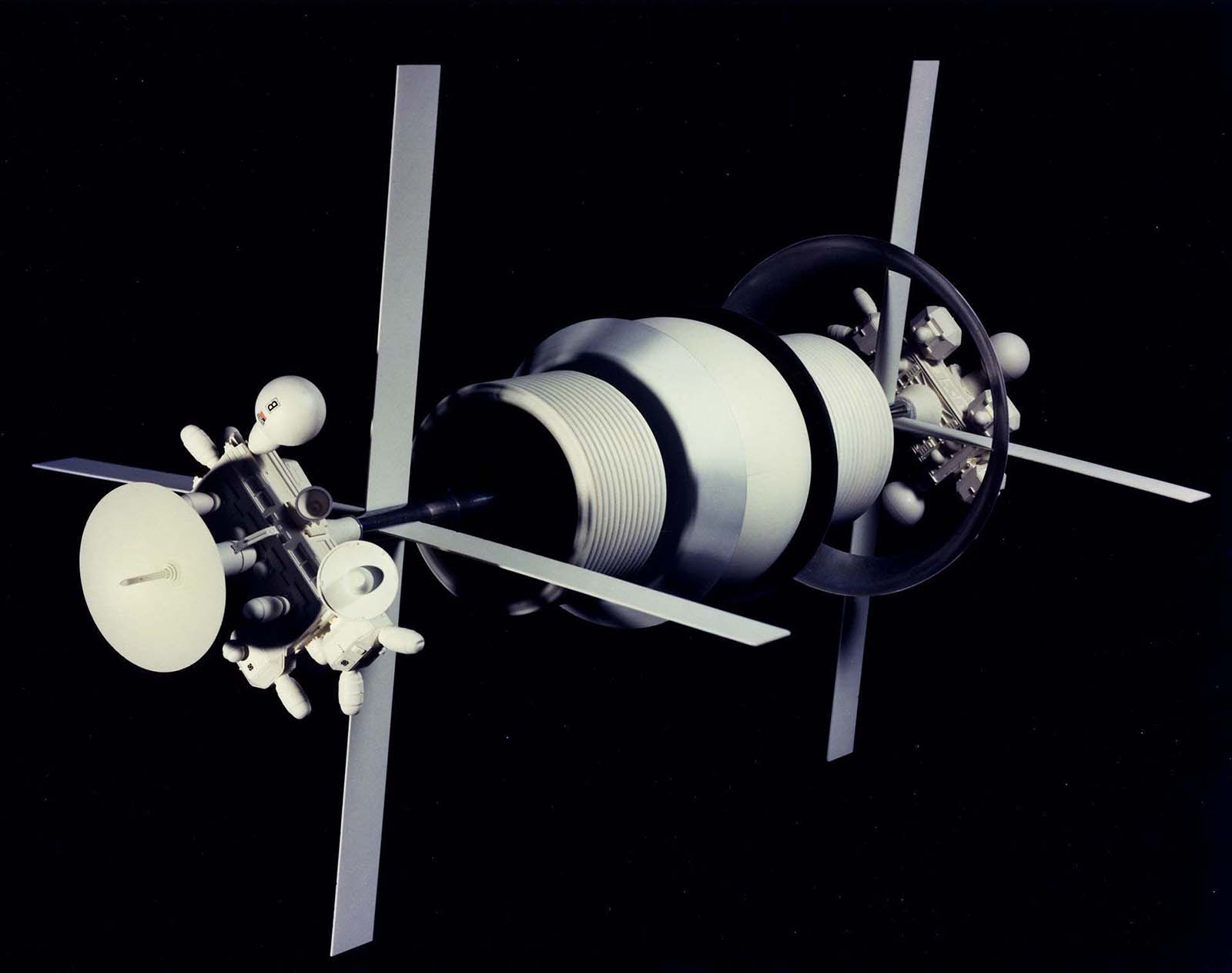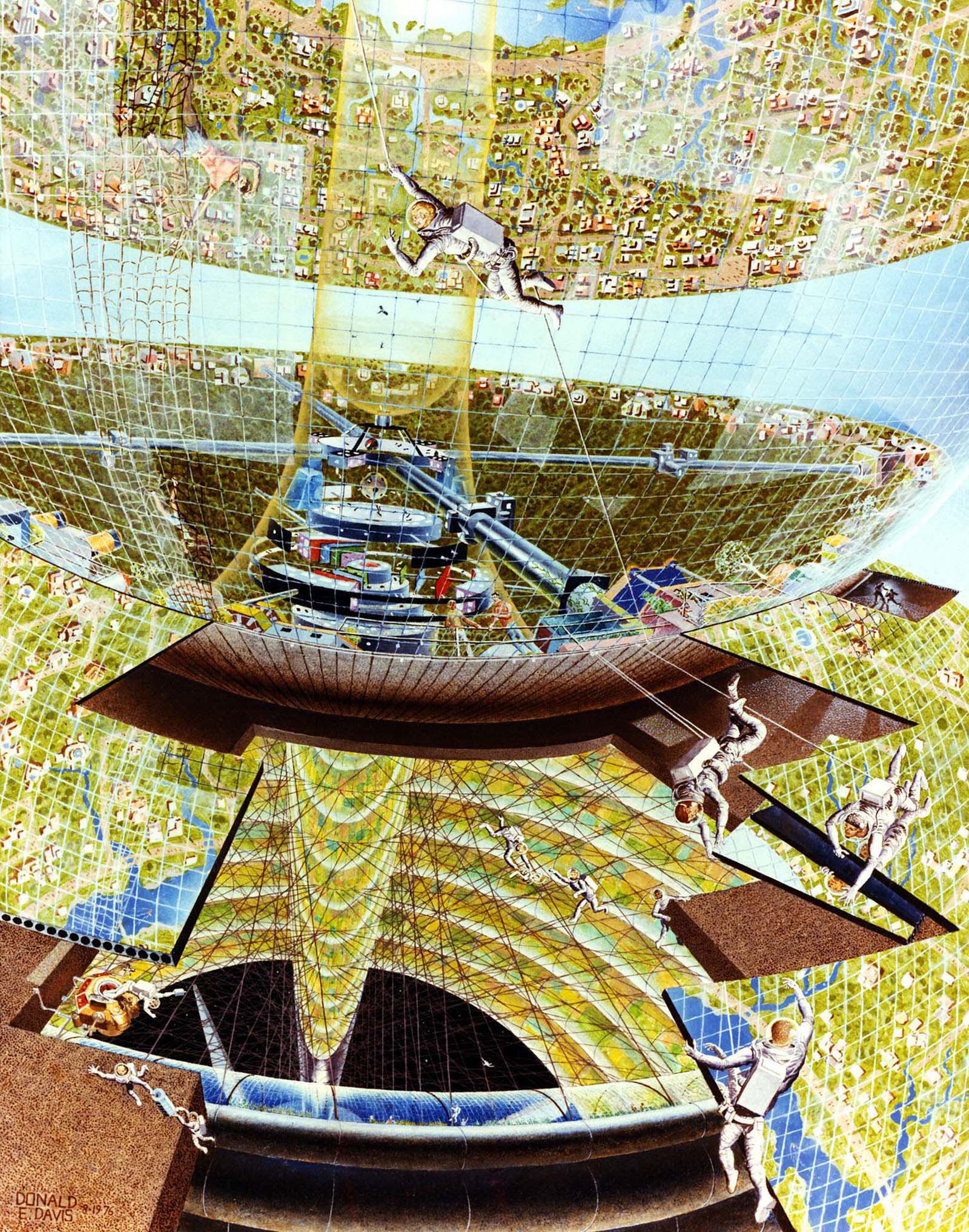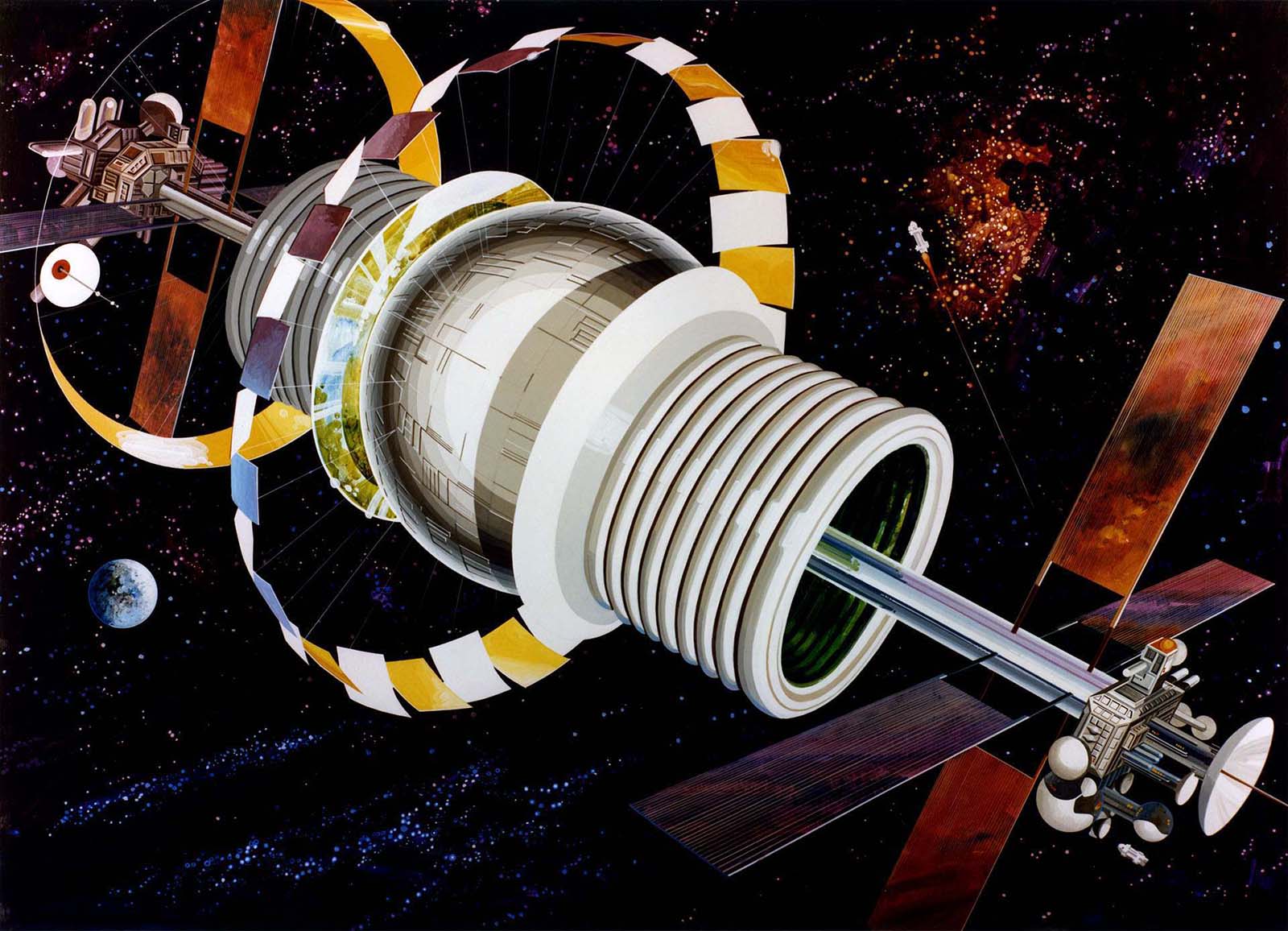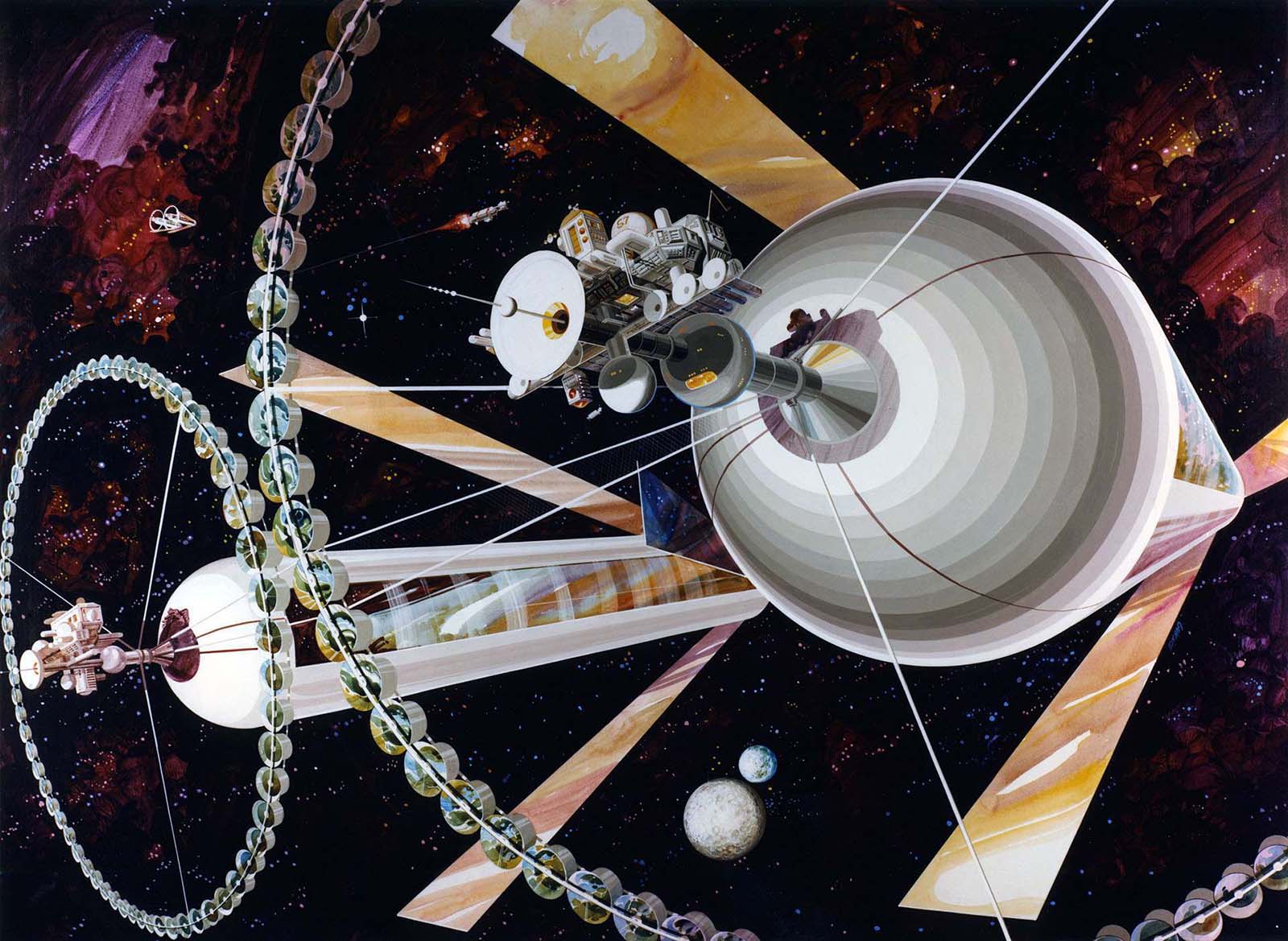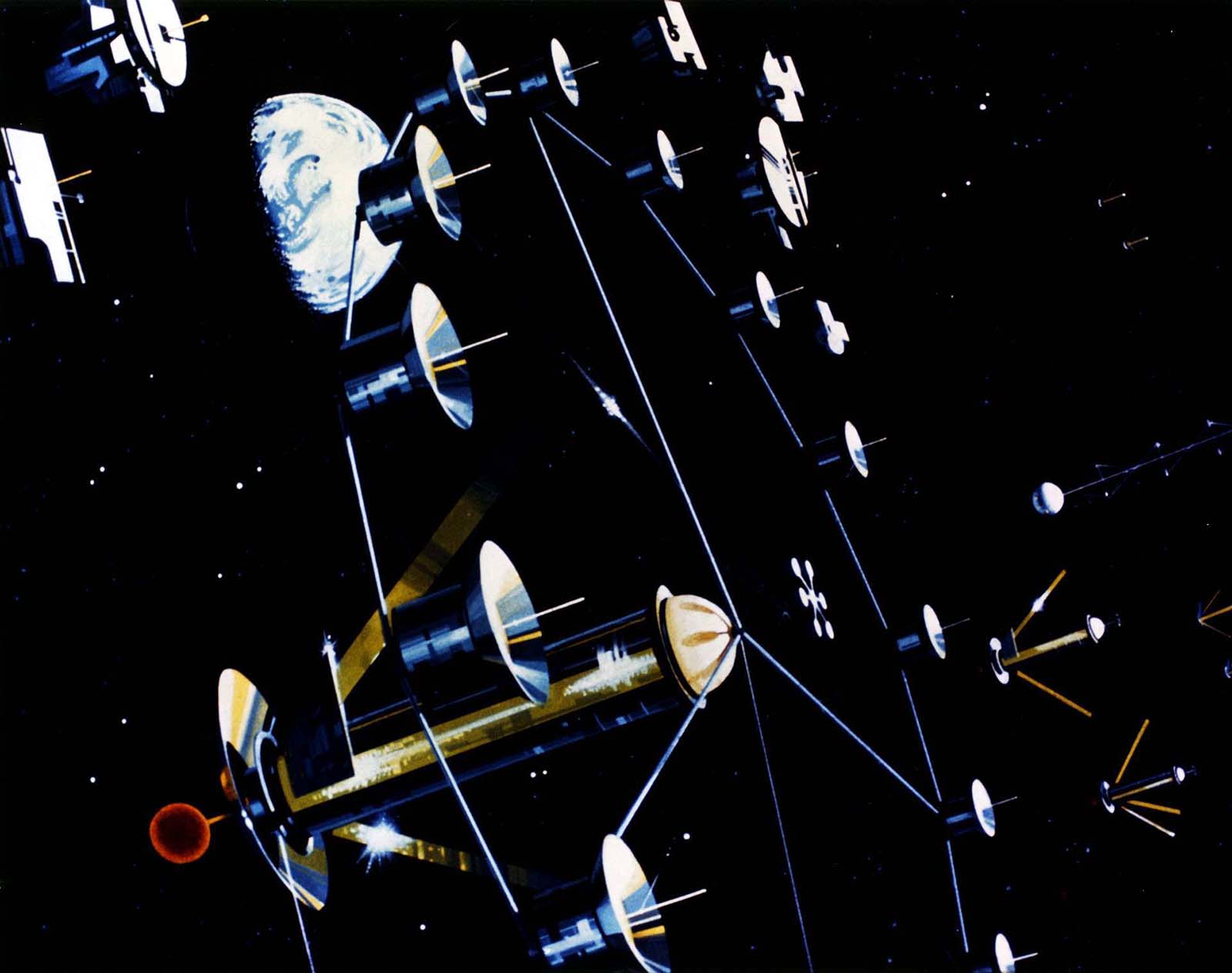The goal was to build a 10,000-person orbiting community with materials and technologies available to people in the 1970s. The whole project was designed to be cost-effective. Humans would harvest the mineral riches of asteroids (such as cobalt, iron, nickel and platinum). Artists were commissioned to imagine what these slowly rotating complexes would like (rotation was needed to provide gravity). These visions of space colonies and our general future in space were gripping and ignited the imagination of more than a few young dreamers. The images are just as beautiful today as there were then. There were three main types of the colony that were conceived: a toroidal (or donut-shaped) colony, a cylindrical colony, and a “Bernal sphere,” which would house people inside the surface of a sphere. All rotated in order to simulate Earth’s gravity and were lit by huge mirrors that reflected the sun’s rays into the interior. The colonies were imagined as completely self-contained habitats with artificial gravity, some with artificial and controllable weather, where people could comfortably live out their entire lives. Some of the concept space habitats were designed in large sizes: cylinders five miles (8 km) wide and twenty miles (34 km) long, even if made from ordinary materials such as steel and glass. Also, the team considered problems such as radiation protection from cosmic rays (almost free in the larger sizes), getting naturalistic sun angles, provision of power, realistic pest-free farming, and orbital attitude control without reaction motors. Attempts were made to make the habitats as self-supporting as possible, but all of the designs relied on regular shipments from Earth or the Moon, notably for raw materials and volatiles. The proposals and studies generated a notable groundswell of public interest. One effect of this expansion was the founding of the L5 Society in the U.S., a group of enthusiasts that desired to build and live in such colonies. The group was named after the space-colony orbit that was then believed to be the most profitable, a kidney-shaped orbit around either of Earth’s lunar Lagrange points 5 or 4. There are several prominent reasons for space colonization: security, profits, energy and raw materials. Space habitats are likely to be less affected by disasters that damage the Earth, such as overpopulation, or ocean strikes by large bolides (such as meteorites). Although an individual habitat is probably less secure than Earth, many habitats together add substantially to human survivability. They provide opportunities for migration. Space has most of the same raw materials found on Earth, and large amounts of energy. It should be possible to make profits if the infrastructure for space mining and space manufacturing can be created. The initial investments required are large, but the profitability is potentially open-ended. As there exists a vast amount of material to build within the solar system, and as a space habitat is out of planetary gravity wells, allowing for relatively cheap travel and movement of materials, a vast population using multiple habitats could live and work in space permanently. Habitats outside the shadows of planets can use solar power 24 hours a day. Zero-g enables the creation of extremely large-yet-flimsy concentrating mirrors to gather this constant and abundant energy. As well, colonies may employ nuclear power, which wouldn’t have all the same environmental and safety concerns that might be present with a nuclear installation on Earth. (Photo credit: NASA Ames Research Center / New World Encyclopedia). Notify me of new posts by email.
Δ Subscribe

